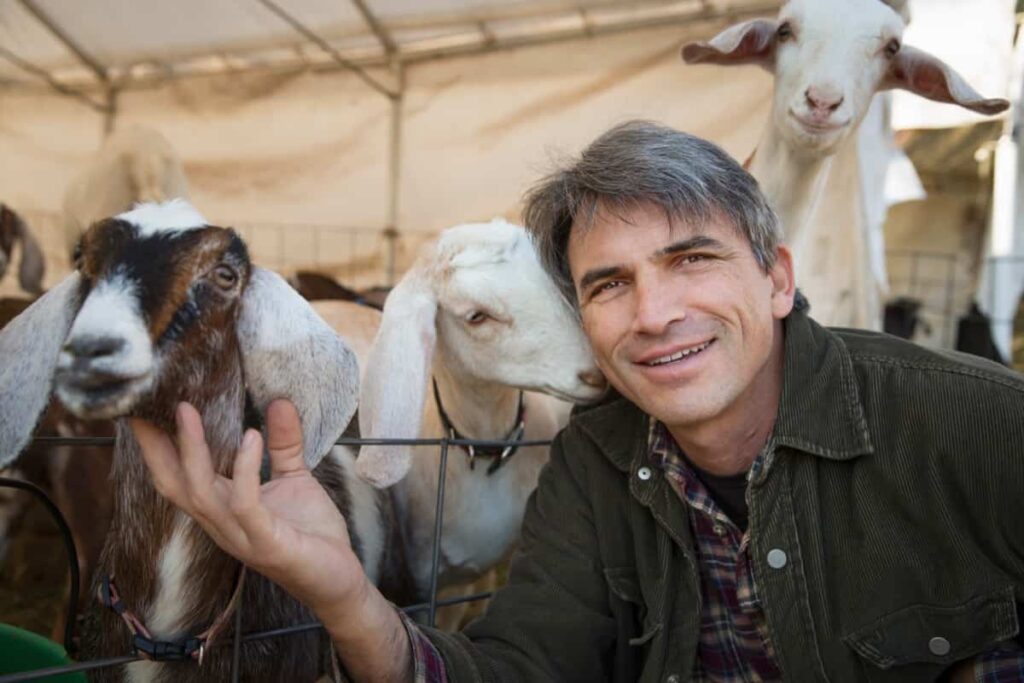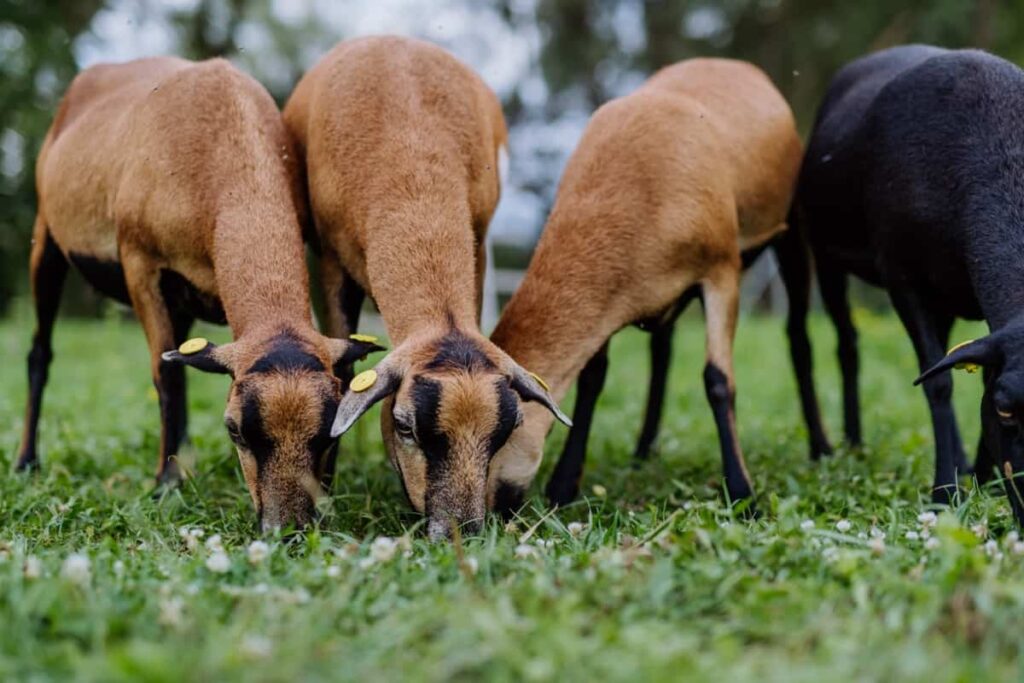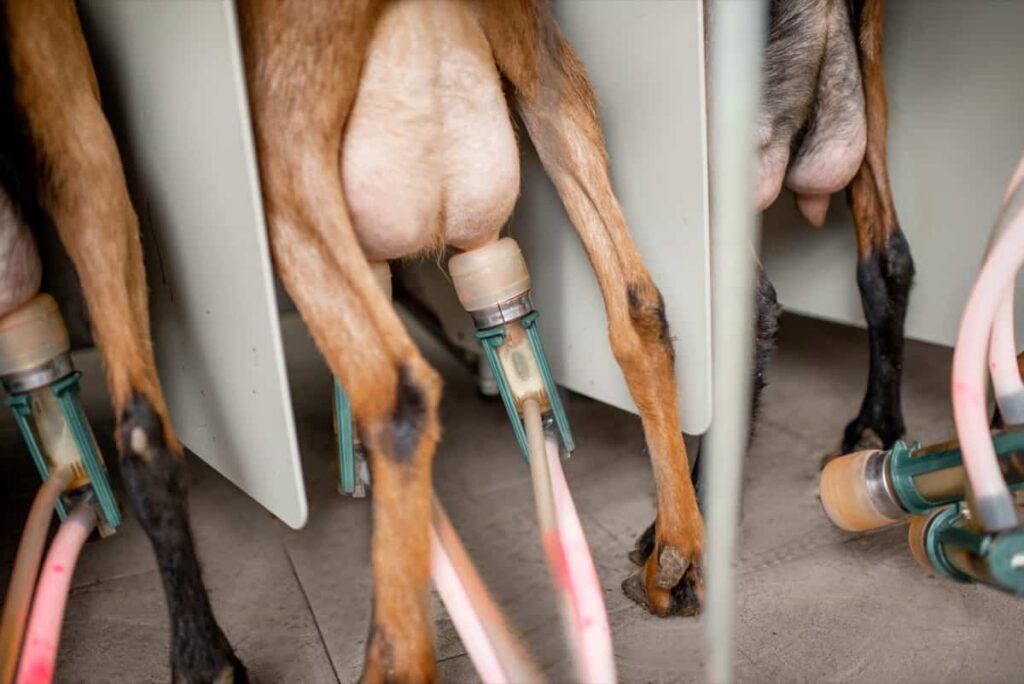With the increasing demand for specialty and artisanal food products, goat products are gaining popularity for their unique flavor, health benefits, and sustainability. Goat farming has a lower environmental impact than traditional livestock farming, making it a viable option for consumers looking for eco-friendly and sustainable food options. This blog post will explore the latest marketing trends, strategies, and opportunities for goat products.

We’ll discuss social media and influencer marketing, the benefits of e-commerce and direct-to-consumer marketing, and the expansion of international markets for goat products. We’ll also cover strategies highlighting goat products’ health benefits, sustainability, and versatility and the opportunities for value-added goat products such as soap, lotion, and candles.
Marketing Trends/Strategies and Opportunities for Goat Products
Importance of Marketing for Goat Products
- Goat products have a high demand in the market due to their nutritional benefits, including high protein and low-fat content, as well as their unique flavor and versatility in cooking.
- The demand for goat products, including meat, milk, cheese, and other dairy products, has recently increased due to the growing interest in healthy and sustainable food options.
- Farmers must have effective marketing strategies to reach their desired market and differentiate themselves from their competitors to meet the increasing demand for goat products.
- Effective marketing strategies can help farmers increase product visibility, build brand awareness, and establish a loyal customer base.
- Farmers can use various marketing channels, including social media, farmers’ markets, direct sales, and collaborations with local restaurants and specialty food stores, to promote their goat products and reach their target market.
- Farmers must also consider the quality of their products, packaging, and pricing to meet their customers’ needs and expectations.
Marketing Trends for Goat Products
Marketing Trends in Dairy Products
There is a slow but steady growth trend in the dairy goat milk and cheese (chevre) market as consumers become more aware of the products’ higher protein and lower cholesterol levels. Direct market sales, farmers’ markets, internet sales, retail stores, and restaurants are all outlets for dairy goat producers. With dairy goat products occupying an expanding niche market, there is great potential for producers to increase their profits. The United States and worldwide have many milk goats in every state, offering local produce and direct marketing opportunities.
Marketing Trends in Goat for Fiber
Goat fibers, including mohair and cashmere, are in demand for their luxurious qualities. Cashmere, in particular, is highly valued for its softness and warmth. The production of goat fiber is often a secondary focus for meat and dairy goat operations. According to USDA data, local markets account for most goat fiber sales. Mohair in the commercial market can sell for up to $7.88 per pound, but adding value through processing and producing yarn can generate higher returns, up to $150.00 per pound, for producers.
In case you missed it: A Beginner’s Guide to Organic Urban Goat Farming

Marketing Trends in Meat Goat
The demand for goat meat is driven by the growth in U.S. ethnic populations and the desire for healthy diets. Meat goats totaled 2.09 million heads in 2020, down slightly from 2017. Effective marketing requires quality and consistency of products. Common methods include auction markets, private buyers, consignment, and on-farm sales. On-farm sales are usually the most profitable because they eliminate sales commission and transportation costs. Meat goats are leaner and more muscular than dairy goats. Meat goats are managed with rotational grazing programs and minimal shelter.
Marketing Goat Meat
Meat goats offer a low-fat, leaner source of protein and can be an affordable livestock enterprise. Marketing channels for meat goats include livestock auctions, private buyers, consignment sales, on-farm sales, local grocery stores, internet sales, and personal contacts. On-farm sales are the most profitable option. Meat goats generally kid twice a year, with a gestation period of 147-150 days.
Popular meat goat breeds include Boer, Kiko, Nubian, Pygmy, and Spanish. Goat meat is called cabrito if harvested within the first week of birth or chevon if from older kids. Meat goats rely heavily on forage, and rotational grazing is recommended. Effective fencing options include net, woven wire with barbed wires, or high-tensile with electric wire. Goats require minimal shelter, but parasite control is essential.
Tips for Marketing Goat Meat
- To market goat meat effectively, start by identifying your target audience and understanding what they are looking for in their meat.
- Stand out from the competition by offering lower prices, promoting health benefits, providing recipes, or giving samples. Targeting holidays can also be a successful strategy.
- Consider marketing to specific ethnic groups who traditionally eat goat meat, and be sensitive to their cultural needs and traditions.
- Building relationships with these groups can help create a successful marketing strategy.
Marketing Goat Milk
The global goat milk products market is expected to grow at a CAGR of 7.77% from 2022 to 2027, reaching $17.95 billion. In 2021, goat cheese was the leading segment contributing the highest revenue, with the U.S. being the fastest-growing market. The rising demand and market for goat milk products in different countries, such as the U.S., China, France, and Germany, has led several large firms to expand their consumer base and develop a unique market position through acquisitions.
Goat milk is most widely consumed due to its exceptional nutritional and physiological benefits; minerals such as protein, phosphorus, calcium, magnesium, and vitamins are abundant. The market is divided into product type, UHT milk, application, milk powder, packaged milk, and distribution geography.
Tips for Marketing Goat Milk
- Identify your target audience.
- Highlight the nutritional benefits of goat milk.
- Develop creative product packaging and branding.
- Offer unique flavors and tastes.
- Collaborate with influencers and health professionals.
- Attend relevant trade shows and events.
- Leverage social media to reach potential customers.
- Offer promotions and discounts to increase sales.
Strategies for Marketing Goat Products
- Understand your target audience: Research and identify your target audience, their needs, preferences, and buying behavior.
- Differentiate your products: Highlight the unique nutritional benefits of goat milk products and distinguish them from other dairy products.
- Create a brand: Develop a unique brand image that helps with your target market and reflects the quality and benefits of your products.
- Leverage social media: Use social media platforms like Instagram, Facebook, and Twitter to showcase your products, engage with your market, and build a community around your brand.
- Collaborate with influencers: Partner with influencers who align with your brand and target audience to promote your products and increase brand awareness.
- Offer promotions and discounts: Provide incentives for customers to try your products, such as discounts or promotions, to increase sales and brand loyalty.
In case you missed it: Entrepreneurship Opportunities in Goat Farming

Opportunities for Goat Products Marketing
Because goat products are becoming more popular and have unique health benefits, there are many ways to market them. Goat milk, cheese, and meat are sought after by consumers looking for high-quality, sustainably sourced, and healthy options. The growing demand for organic and natural products further enhances the opportunities for goat products in the market. Goat products are also favored by those with lactose intolerance or sensitivity, providing a wider consumer base.
Conclusion
The demand for goat products is rising, creating new possibilities for farmers and merchants. Social media, highlighting product benefits, and expanding into new areas are all effective marketing methods to take advantage of these opportunities and promote development.
- Types of Grass Growing for Goat Farm
- How to Train Goats for Milking: A Beginners Guide
- Goat Milking Practices and Equipment: A Beginner’s Guide
- Goat Farming for Fiber: Producing Mohair and Cashmere
- Maximizing Goat Milk Production: Tips for Dairy Goat Farmers
- Goat Farming as a Family Business: Strategies for Success
- Profitable Kenya Goat Breeds for Commercial Dairy and Meat Business
- Unlock the Secrets of Oberhasli Goat: Discover Raising and Management Practices
- Ultimate Guide to Myotonic Goats: Explore Profile to Raising
Thank you for the informative piece